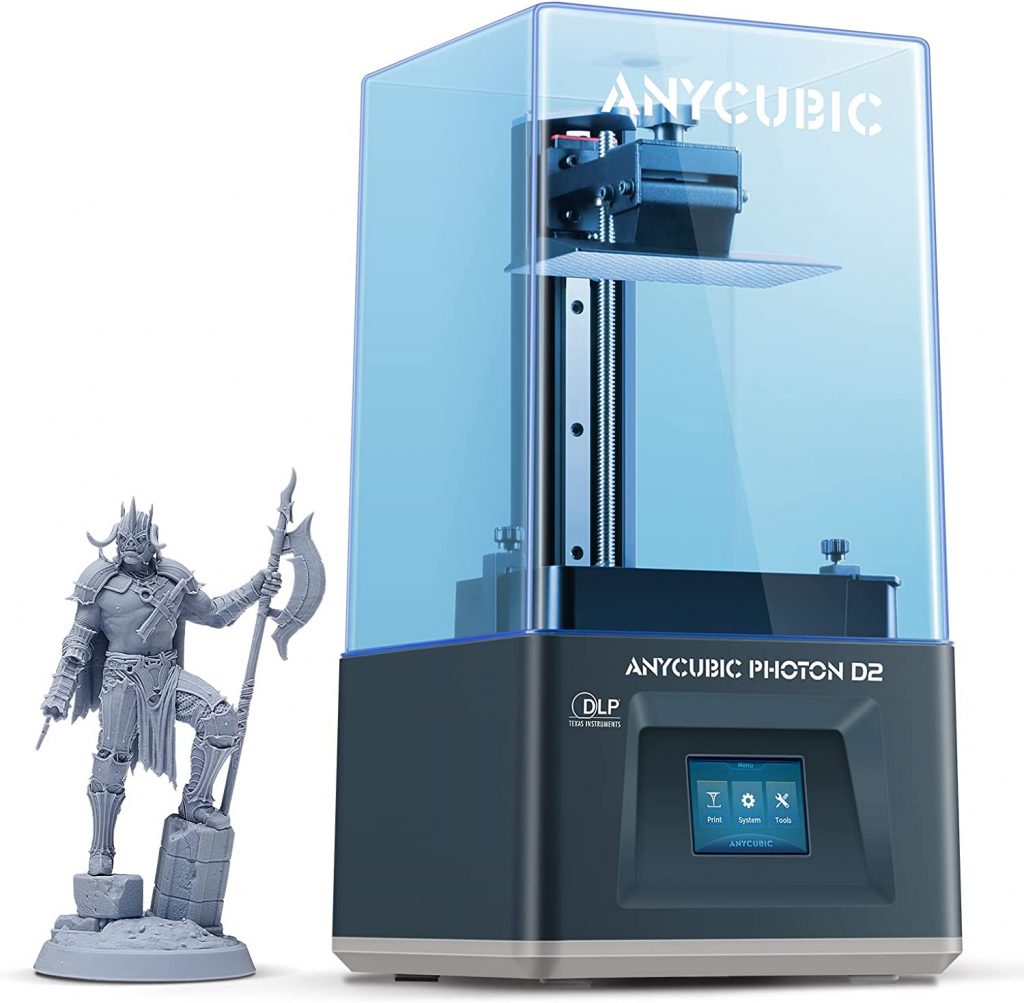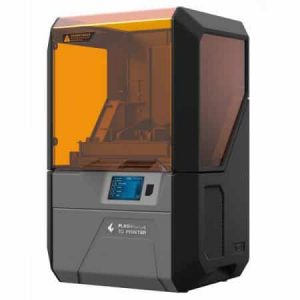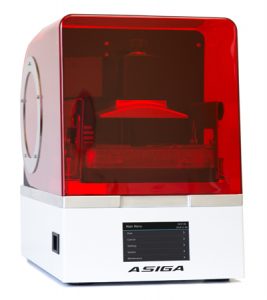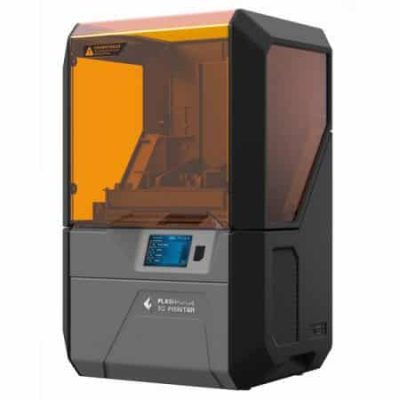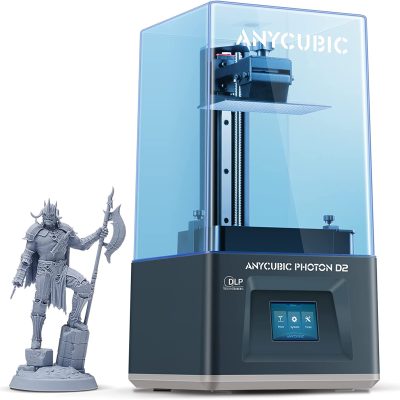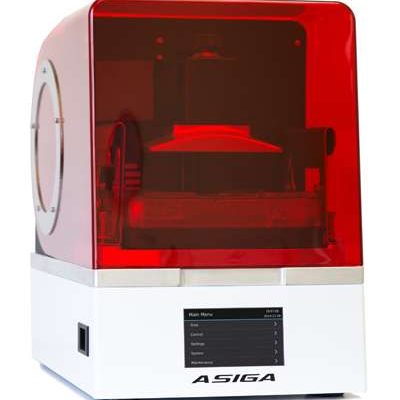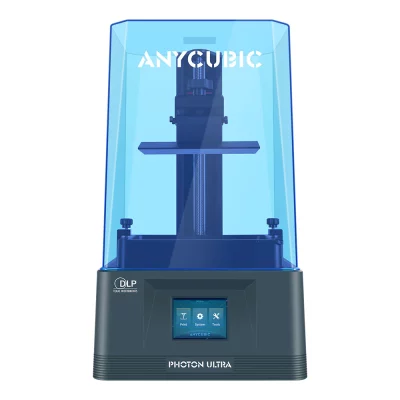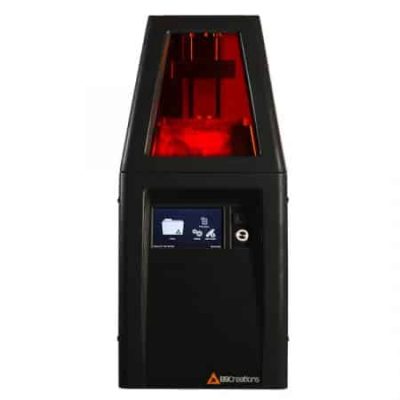- Last Updated: January 12, 2024
-
 Pat Nathaniel
Pat Nathaniel
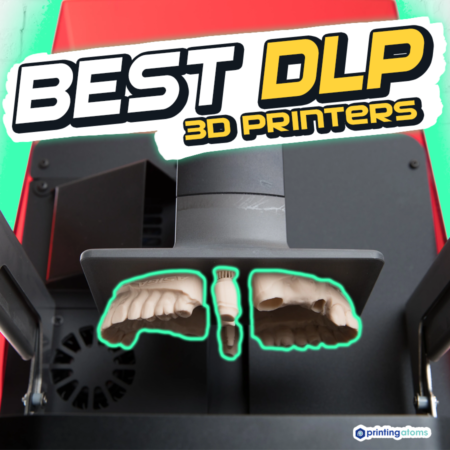 Want to invest in a DLP 3D printer but don’t know which one’s right for you?
Want to invest in a DLP 3D printer but don’t know which one’s right for you?
We feel your pain. There are so many printers out there, and some of the information about them is downright difficult to understand.
The product specifications page of a DLP 3D printer is a treacherous, frightening land we don’t recommend journeying to by yourself. Many a noble 3D printing enthusiast has been swallowed whole by all the numbers and technical jargon, never to be seen again.
But don’t worry – we’ve taken it upon ourselves to navigate these scary places, and we’ve got you covered. Here’s our guide that gives you an in-depth 360 degree look at each printer, as well as every bit of information you need to know to make the best purchasing decision possible.
Let’s get right into it!
Table of Contents
- Best DLP 3D Printers At A Glance
- 1. Flashforge Hunter DLP (Best Choice)
- 2. Anycubic Photon D2 (Best Value)
- 3. Asiga Max (Premium Choice)
- 4. Anycubic Photon Ultra (Cheap Introduction to DLP Printing)
- 5. B9 Core 550 (Best Speedy Printer)
- What is a DLP 3D Printer?
- Difference Between DLP, FDM, and SLA 3D Printer
- What to Consider When Buying a DLP 3D Printer?
- So Which DLP 3D Printer Is The Best?
Best DLP 3D Printers At A Glance
1. Flashforge Hunter DLP (Best Choice)
2. Anycubic Photon D2 (Best Value)
3. Asiga Max (Premium Choice)
4. Anycubic Photon Ultra (Cheap Introduction to DLP Printing)
5. B9 Core 550 (Best Speedy 3D Printer)
3D Printer Type: DLP | Materials: Photopolymer Resin | Build Volume: 120 x 67.5 x 150 mm
“If you liked it then you should have put a ring on it.”
Well, now you can heed Beyonce’s advice and print your own ring with the Flashforge Hunter DLP printer. Other than having a pretty cool name, the Hunter is a mid-range printer that offers high-quality printing, especially for jewelry and other applications that require fine detail.
With an LCD at 1920 x 1080 pixels, it offers layer thicknesses starting from 25 microns down to just 2 microns. It offers an XY resolution of 62.5 microns. It’s perfect for really, really tiny builds such as tabletop figurines (D&D, anyone?) or intricate jewelry pieces.
With a decent print volume of 120 x 67.5 x 150 mm and a bit of a slower printing speed at 30mm/hr, this is suited for individuals or small businesses that want detailed prints.
It comes with a jewelry support mode that has more flexible support structures for intricate jewelry designs. The Flashforge also offers different printing modes with resin presets for easy printing. This saves a lot of time as there’s no need to tinker endlessly with the settings.
FlashForge has its own proprietary resins, such as some specifically for jewelry casting, but this printer is also compatible with third-party resins.
Again, a great and affordable printer for jewelry or if you’re a hobbyist who wants to print finely-detailed, small things.
Pros
- Layer thicknesses of 25 down to just 2 microns for applications that require fine detail
- Easy printing presets
- Jewelry support mode for intricate pieces
Cons
- Not very fast printing speed
3D Printer Type: DLP | Materials: Resin | Build Volume: 131 x 73 x 165 mm
So, you tried out Photon UItra and want to move to something a bit more advanced? Say hello to its big brother, Anycubic Photon D2.
The Photon D2 does what its smaller counterpart does, just more accurately. The layer resolution is the same at 10 microns, but D2 improves XY resolution to 51 microns and bumps up the screen resolution to 2560 x 1440 pixels, rivaling B9 Core 550 and Flashforge Hunter.
Only, D2 costs a lot less.
The value you get from this printer is, quite frankly, insane. It’s aimed at professional users and can produce intricate jewelry molds or dental appliances, but it’s affordable enough for any hobbyist who wants to print intricate tabletop miniatures.
Compared to Photon Ultra, D2 has an improved light uniformity algorithm, which further increases detail quality. It does make D2 slightly slower than its little brother, but the higher detail might just be worth it.
The print chamber is well-sized at 131 x 73 x 165 mm. If there are any downsides to D2, it’s locked to Photon’s own slicer software, which can be a bit hit-or-miss with functionality. Third-party slicer support is reportedly coming, but for the time being, it’s Photon or nothing.
That’s a small problem, though. Anycubic Photon D2 is the best DLP 3D printer on the market when it comes to the balance of price vs. quality.
Pros
- Excellent detail
- Cheap
- Third-party resin support
- Great machine quality
Cons
- Locked to Photon’s software
- Slow-ish print speed
3D Printer Type: DLP | Materials: Resin | Build Volume: 119 x 67 x 75 mm
Accurate, fast, and reliable, the Asiga Max is a great option for professionals and hobbyists alike.
A pixel resolution of 62 microns, as well as a Smart Positioning System (SPS), means that your prints are going to be very finely detailed and accurate.
With a build volume of 119 × 67 × 75 mm, it’s good for printing smaller, finer objects. And all this at a nice, compact size and a weight of just 19.3 kg.
The Asiga Max is optimized for professional environments such as audiology, jewelry, and dentistry — but can just as well be used to print ultra-HD Funko Pops in your own house. Or to flood your neighbor’s doorstep with high-quality miniature Homer Simpson figurines. (Don’t do that.)
As for support, Asiga’s got your back. The Asiga Max comes with lifetime software updates and free tech support for life — pretty neat!
It also has the added benefit of being completely open to 3rd party resins, so this is really handy if you want the flexibility to work with different types of resins.
Take note, though — with great accuracy comes great cost! If you have the budget for it and want smaller, precise prints, perhaps if you’re working with jewelry or any similar applications, the Asiga Max is definitely worth the spend.
Pros
- Super accuracy with an XY resolution of 62 microns
- Lifetime software updates
- Free tech support for life
- Open resin system
Cons
- Expensive
- Build platform may be too small for some applications
3D Printer Type: DLP | Material: 405 nm UV Resins | Build Volume: 102.4 x 57.6 x 165 mm
Even the most “affordable” DLP printer on this list so far has been pretty pricey. What are you supposed to do if you want to try DLP printing without blowing thousands of dollars into it?
The answer is simple — you buy an Anycubic Photon Ultra.
Photon Ultra is a truly budget-friendly resin 3D printer. At this price, it’s the perfect stepping stone into the world of DLP printers.
If you’re worried about sacrificing quality for a low price, well… Don’t be. With a 10-micron resolution and an 80-micron XY resolution, the Photon Ultra punches way above its price tag.
The print speed is also reasonably fast, at 1.5 seconds per layer (or 6cm/h). You can quickly print detailed miniatures or decorations.
Speaking of miniatures, Photon Ultra is blessedly small. Weighing only about 8 pounds, it can fit on almost any desk.
You’d imagine the compact form factor would be an Achilles’ heel when it comes to print volume, but you’d be wrong. With a build volume of 102.4 x 57.6 x 165 mm, the small but mighty Photon Ultra actually beats most other printers on this list.
If there is a downside to Photon Ultra, the DLP screen has a rather low 1280 x 720-pixel resolution. That can make some details appear a bit rough.
But if you’re interested in trying out DLP printing, Anycubic Photon Ultra is a fantastic low-cost option.
Pros
- Actually affordable
- Decent detail quality
- Compact machine
Cons
- Low screen resolution
- No Wi-Fi connectivity
3D Printer Type: DLP | Material: Resin | Build Volume: 96 x 54 x 127 mm
Want a mid-range 3D printer with amazing speed and print quality? Look no further than the B9 Core 550.
With a 10 micron resolution and an impressive XY resolution of 50 microns, as well as a printing speed of more than 80 mm an hour, the B9 Core 550 is like an Olympic gold medalist — accurate and fast.
Its resin tank can last over 1,250 prints — pretty long-lasting and sturdy and saves you money on having to buy a replacement. The B9 Core has a build volume of 96 × 54 × 127 mm that’s suited for smaller prints.
And its design sets it apart from other 3D printers. If you’re a bit of a design geek, you might appreciate the B9 Core’s interesting geometric anatomy. Or maybe you think it looks like a miniature golf cart. That’s up to you. But the printer is darn good and comes at a pretty good price considering its specs.
It’s also intuitive and easy to use, which is a great plus if you’re new to 3D printing. This printer is great if you need fast and accurate prints, whether for making jewelry, action figures, or art pieces.
Pros
- Intuitive and easy to use for beginners
- Fast
- More affordable than the Asiga or Envision One
- Offers layer thickness of 10 microns
Cons
- Bit of an unconventional design that might not be appealing to some
What is a DLP 3D Printer?
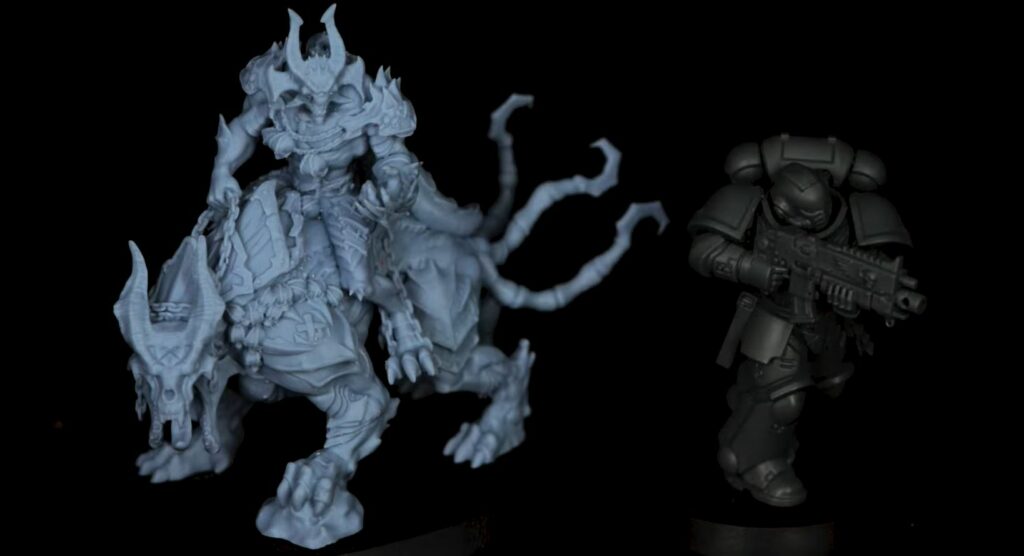
There are a lot of fancy terms and letter combinations floating out there when we talk about 3D printers. Simply put, there’s a whole bunch of different 3D printing technologies, and these names talk about how they vary from one another.
DLP stands for Digital Light Processing, which works by using a projector and a UV laser to harden liquid resin into a solid, finished product.
Difference Between DLP, FDM, and SLA 3D Printer
DLP (Digital Light Processing) uses a projector to cure liquid resin. It’s one of the fastest 3D printing technologies out there, working up to 12 times faster than similar SLA printers. It has the affordability you might expect from FDM printers while still being accurate and fast, similar to SLA printers.
It’s a worthy investment if you want an all-around good printer for both work and play.
FDM, Fused Deposition Modeling, is probably the most common technology for 3D printing. FDM works by heating plastic filament until it melts. It then squeezes it out of a nozzle in layers onto a build tray to make a print. It’s an inexpensive and accessible method which yields some sturdy builds – but it can often leave some layer lines on the finished product. FDM might not be for you if you’re looking for minute accuracy but rather for a durable and strong build.
SLA (stereolithography) is also a type of resin printing process, but instead of a projector like DLP it uses a laser to cure liquid resin. SLA cures resin point by point, while DLP cures resin one layer at a time. SLA is generally more accurate than FDM and DLP printers, but it can get preeetty expensive. Also, it’s slower compared to DLP printers.
What to Consider When Buying a DLP 3D Printer?
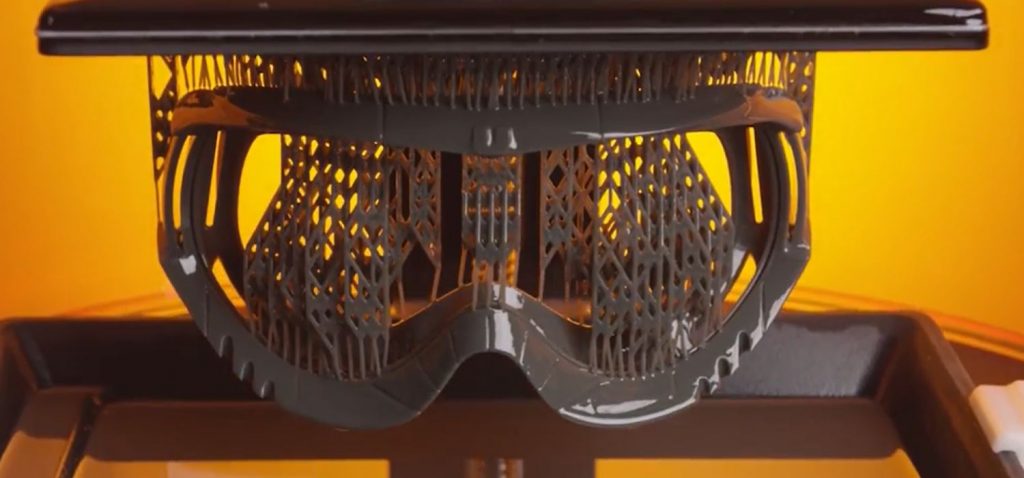
Price
3D resin printers aren’t cheap, but you don’t want to go and buy a rip-off 3D printer from Amazon. As the cliche goes, you get what you pay for, and a lot of these printers are, simply put, a waste of money.
Keep in mind not all lower-cost printers are rip-offs. There are budget options that come with great features! But there’s a difference between a lower-cost printer and an unbelievable $100 printer that would just end up being a waste of money, time, and effort. You’re better off spending that on 12 boxes of multi-colored rubber ducks — at least you’ll get your money’s worth!
Another tip to keep in mind: there are a lot of scammers and fakes out there, so we suggest always checking that you’re buying from a reputable, legit vendor.
As for lower-cost printers – while legit, some of them can be lower-quality in build, sometimes needing a bit of upkeep, DIY, or maintenance and support. This can end up being pricey in itself, so always keep in mind that with a reduction in price there can be a bit of a trade-off in quality.
The fact is that a good 3D printer is an investment, and so you have to look thoroughly into the specifics, as well as what you need exactly, to make the best purchasing decision possible.
Resolution
A good 3D printer is a difference between a high-quality, detailed print or an unrecognizable blob of plastic or resin.
There’s a spectrum when it comes to resolution and quality in 3D printers. If you’re looking for really high resolution, some printers offer that at a higher cost. Other printers offer decent resolution which would be fine for models and crafts but not as super-detailed as some other applications require, such as dentistry and jewelry.
Get ready for the 3D printer nerd talk…here goes. Okay. It’s a 3D printer, right? That means we’re working in 3 dimensions. So there are 3 axes — the X, Y, and Z axes.
There are two types of resolution in 3D printers — XY resolution and Z-resolution, also known as layer thickness. XY resolution refers to the horizontal resolution, while Z is vertical.
The XY resolution determines the resolution and print quality, while the Z resolution determines how thick each layer can be.
Applications like jewelry and dentistry require much smaller layer thicknesses, from 50 microns and below. As for XY resolution, just like for Z resolution — the smaller, the better. Smaller resolutions translate to highly-detailed builds and designs.
There are some printers that can work for both professional and hobby applications. If you want pretty accurate models, a printer that works at 50 to 100 microns is what you need. Anything more than that isn’t going to be finely detailed and will have a rougher finish.
Build Volume
Think about what specifically you need to print and how often. Do you want to print tiny objects or big ones? Do you want to build a lot of objects at once or is one or two enough?
Think about your output. If you want to print an action figure or two every so often, you don’t need that much build volume. If you’re a business or you plan to build a lot of stuff, you’ll probably require a printer with a more substantial build volume.
Reliability
Remember how we said a 3D printer is an investment? This means we have to consider how our printer’s gonna work for the long-term. A good printer can last you up to 10 years — a bad-quality printer may not even make it past the 10 minutes mark. Or maybe 10 days or 10 months. That’s a bad printer.
If you’re going to depend on your printer for work or your hobbies, then you have to make a well-informed decision and put money into a printer that’s not going to let you down.
Customer Support
If you are going to invest in a 3D printer, you have to know that you’re in good hands.
Running into any issues, whether hardware or software, can be an unpleasant experience. Some 3D printing manufacturers make it smooth sailing, and those are the ones whose products you should go for. You don’t want shoddy customer service or get hung up on when you’re having issues.
Sadly, not all printing companies offer good customer service, so keep an eye out for this factor when purchasing a 3D printer.
So Which DLP 3D Printer Is The Best?
We’ve looked at a lot of options here, and each printer has its strong and weak areas. Let’s go through each category and figure out which printer shines best where.
When it comes to accuracy, Asiga Max and Flashforge Hunter are both great choices.
Keep in mind they’re both expensive but both solid and reliable and are worth the price if you’re working professionally and/or can afford them.
Next, we have the best of both worlds, which is the Anycubic Photon D2.
Its affordability and accuracy means it can offer really finely-accurate builds at a much cheaper cost than the Asiga and Flashforge. This printer also works really well if you want to print small figurines or similar objects.
If you want a speedy printer that is still very accurate, the B9 Core 550 is great for industrial and hobby applications.
If you want something really budget-friendly, try the Anycubic Photon Ultra. This machine is very affordable and still produce prints with amazing detail quality.




